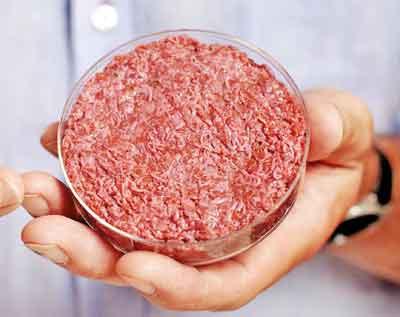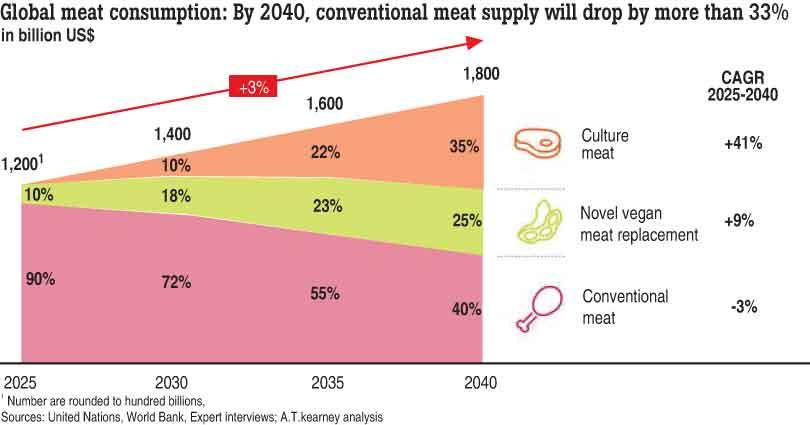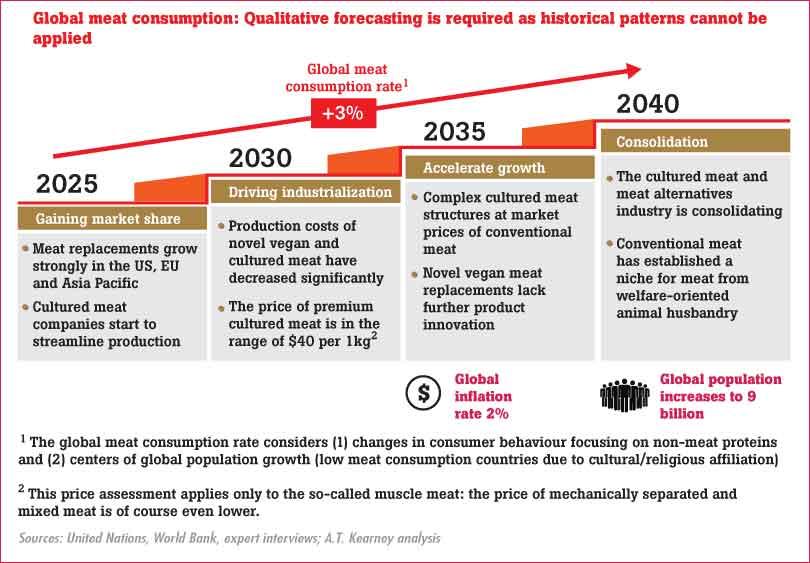12 Sep 2019 - {{hitsCtrl.values.hits}}
Let’s face it, seeing an animal being slaughtered isn’t nice. Even the staunchest carnivores can find the process of breeding and raising animals only to kill them a little uncomfortable. Combine that with the environmental impacts of large-scale meat production and you have two convincing arguments for finding alternatives to meat production in its current form.
Meat alternatives have been around for thousands of years, starting from tofu and gluten-based mock-meats in China, to the current craze of “bleeding, plant-based burgers” such as the Beyond Burger or Impossible Burger. While vegetarians, vegans and the flexitarians (people looking to eat less meat) are flocking to these high-tech meat  alternatives which taste ‘almost’ identical to the original, dedicated meat-eaters aren’t sold. Not only due to suspicions surrounding unfamiliar ingredients, but because they don’t taste “exactly like meat”.
alternatives which taste ‘almost’ identical to the original, dedicated meat-eaters aren’t sold. Not only due to suspicions surrounding unfamiliar ingredients, but because they don’t taste “exactly like meat”.
This is where lab-meat comes in. Also known as cultured meat or the more palatable “clean meat”, scientists will first take a muscle sample from an animal under anaesthetic. Technicians then collect stem cells from the tissue, where they multiply and differentiate into primitive fibres that bulk up to form muscle tissue. One of the early frontrunners in developing this technology, Mosa Meat, says that one tissue sample from a cow can yield enough muscle tissue to make 80,000 quarter-pounders.
While the process sounds weird and slightly unnatural, the process is exactly the same as what happens inside the animal, it’s just happening, outside of it.
 The world-first public tasting of lab-grown meat was held on August 5, 2013, when a lab-grown burger was cooked and eaten at a news conference in London. Food critic Hanni Rützler stated “There is really a bite to it, there is quite some flavour with the browning. I know there is no fat in it so I didn’t really know how juicy it would be, but there is quite some intense taste; it’s close to meat, it’s not that juicy, but the consistency is perfect. This is meat to me... It’s really something to bite on and I think the look is quite similar”.
The world-first public tasting of lab-grown meat was held on August 5, 2013, when a lab-grown burger was cooked and eaten at a news conference in London. Food critic Hanni Rützler stated “There is really a bite to it, there is quite some flavour with the browning. I know there is no fat in it so I didn’t really know how juicy it would be, but there is quite some intense taste; it’s close to meat, it’s not that juicy, but the consistency is perfect. This is meat to me... It’s really something to bite on and I think the look is quite similar”.
Technically, the only resources needed would be to generate and sustain cultured cells, not an entire organism from birth.
In a study published in Environmental Science and Technology, they estimated that “lab-grown meat involves approximately 7–45% lower energy use (only poultry has lower energy use), 78–96% lower greenhouse gas emissions, 99% lower land use, and 82–96% lower water use depending on the product compared. Despite high uncertainty, it is concluded that the overall environmental impacts of cultured meat production are substantially lower than those of conventionally produced meat.”
Dr Marianne Ellis, Senior Lecturer in Biochemical Engineering in the University’s Department of Chemical Engineering has been working on a project to create lab-grown bacon had similar sentiments. “The huge advantage of eating something like cultured meat is that it addresses our global needs and our global challenges of both food security and addressing climate change.
Our global population is growing and our current food production methods will not scale to produce what we need to feed everybody. We need something like an additional 60 million tons of protein to feed the population by 2050 and we can’t do that like we currently do. This cultured meat is a way to do that. It can be done anywhere in the world – it can be done where it is really hot and where it is really cold”.
There are scientists though who are unsure if these products will be better for climate change than raising animals.
The University of Oxford researchers found that, while methane-producing cows are thought to be the culprits of a major source of greenhouse gases, the methane they produce only stays in the atmosphere for around 12 years. Carbon dioxide, which a lab would produce to power the production of cultured meat, could last for thousands of years. But even this would depend on the individual labs as it could be possible to offset the emissions and become carbon neutral.
Companies such as Mosa Meat, Memphis Meats, SuperMeat and Finless Foods are all trialling lab-grown versions of beef, chicken, bacon, fish and one Australian startup is even experimenting with the lab-grown kangaroo. Mosa Meat seems to be the most confident that they’ll have their products available for public consumption by 2021.
Regardless of your moral stance on eating or not eating meat, the industry itself needs to innovate itself heavily due to the large environmental impacts and animal welfare issues and lab meat could be the way to achieve this.


16 Apr 2024 1 hours ago
16 Apr 2024 1 hours ago
16 Apr 2024 2 hours ago
16 Apr 2024 2 hours ago
16 Apr 2024 3 hours ago